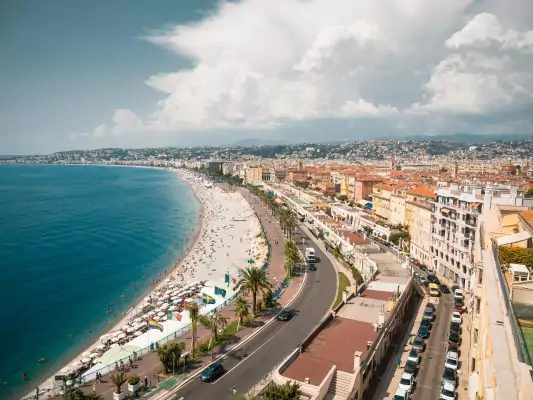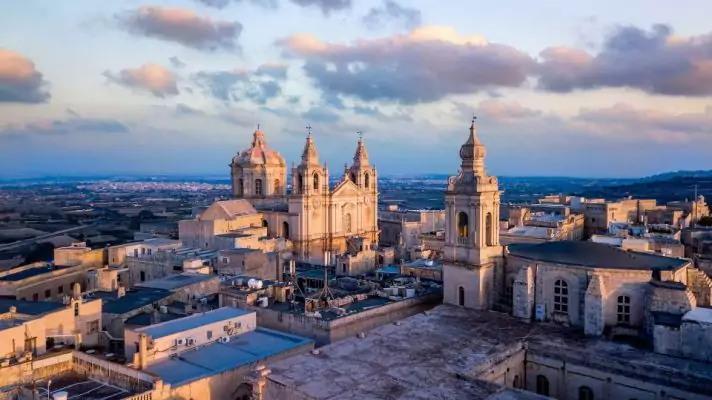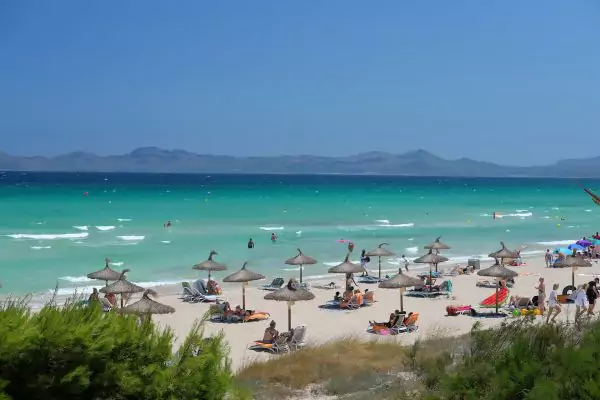Venice 3-Day Travel Guide – What to See and Do + Day trip to Verona

Have a look at our Venice 3-day travel guide and discover the best the city has to offer, including hotels, restaurants, tips to avoid tourist scams and even a detailed list with everything you must see and do in Venice in 3 days, including a day trip to the beautiful city of Verona.
One of Italy’s most famous and visited cities, standing alongside the likes of Rome and Florence, Venice is known globally as the “City of Canals”. After all, as it sprawls across more than a hundred small islands linked by 400 bridges within the Venetian Lagoon, it’s easy to understand how the city earned its moniker. Perhaps that’s the secret behind its staggering popularity – how even in the most beautiful country in Europe, Venice manages to be so fundamentally different all the rest.
However, Venice’s charm goes far beyond its peaceful canals and stereotypical gondoliers. In fact, the entire city boasts a stunning beauty that often shifts between the peaceful/picturesque and the grand/monumental, since Venice was the heart of one of Europe’s most prosperous and powerful maritime states for over 1000 years. As a result, no effort was spared in making Venice as magnificent as possible. Luckily, the city rulers were particularly talented when it comes to city planning, as there’s an outstanding collection of stunning places that once belonged in the Republic of Venice, such as Verona (Italy), Piran (Slovenia), Dubrovnik, Split, Zadar (Croatia), Kotor (Montenegro), Chania and Corfu (Greece).
That being said, we invite you to have a look at our Venice 3-day travel guide and discover the best the city has to offer, including hotels, restaurants, tips to avoid tourist scams and even a detailed list with everything you must see and do in Venice in 3 days.
Venice 3-Day Travel Guide

How to get to Venice – Flights from the UK
Given its popularity, it’s only natural that Venice is served by an international air hub: the Marco Polo International Airport.
As such, if you’re traveling from the UK, it is possible to fly directly to Venice from London–Heathrow (British Airways), London–Stansted (Ryanair), London-Gatwick (Easyjet, Wizz Air and TUI), Bristol (Easyjet and Ryanair), Birmingham (Jet2), Manchester (Easyjet, TUI, Ryanair and Jet2), Edinburgh (Easyjet and Ryanair) and Bournemouth (Ryanair). Furthermore, you may also fly into Treviso – 30 km away from Venice – from London-Luton (Ryanair) and Birmingham (Ryanair).
How many days do I need to visit Venice?

Considering Venice’s universal appeal and widespread beauty, any time you choose to spend in the city will always be deemed worth it. Still, and even though it is one of the most famous destinations on the planet, Venice is actually small compared to other major Italian cities. That being said, if you take a 3-day city break or a special weekend getaway, you’ll be able to experience the very best Venice has to offer. In fact, should you keep up the pace, you may even squeeze in a day trip to Verona!
On the other hand, the more day trips you choose to add to the mix, with classics such as Bologna, San Marino, Treviso and even the Dolomites, the more time you’ll obviously need to see it all.
Venice 3-day travel guide – Best time to visit the city
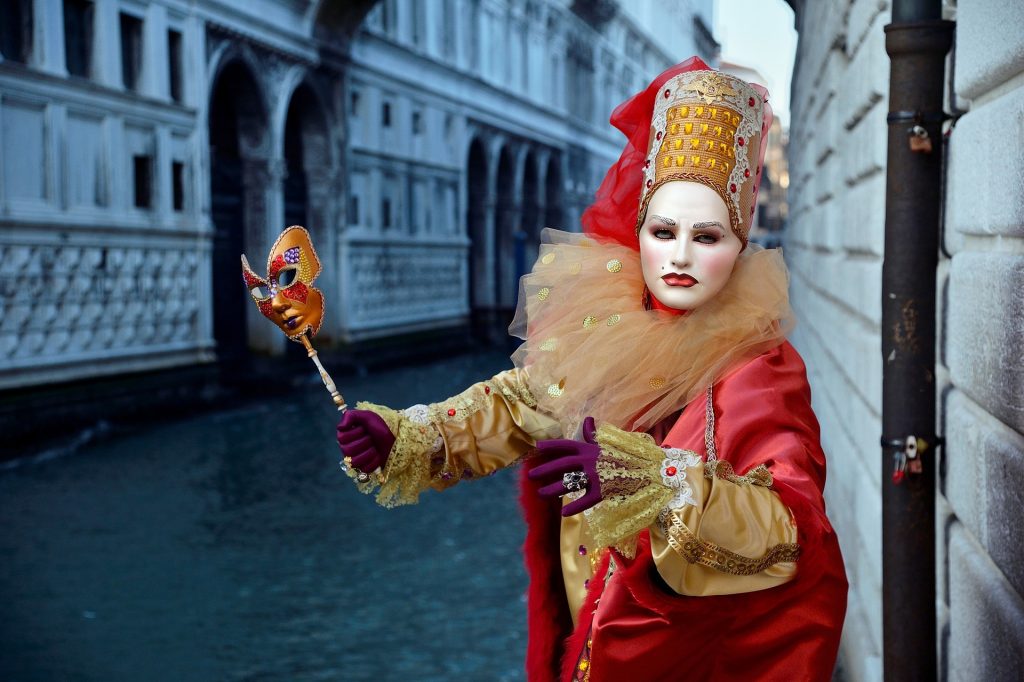
Not a lot of wiggle room to be creative here! Considering the city is located in Southern Europe, Spring, Summer and Fall are definitely the most sought-after months when it comes to booking a trip to Venice, with the period between May and September standing out as the most researched. However, keep in mind Summer months bring to Venice some of the biggest crowds you’ll ever see, and accommodation prices will be through the roof! Plus, if it’s too hot the city will not be nearly as enjoyable (and yeah, the urban legend about the bad smell is actually true when temperatures are too high).
That said, you may choose to visit during shoulder-season, when temperatures tend to be more pleasant, the streets less crowded and the prices less heavy on the wallet. Finally, one couldn’t close out this section without mentioning the world-famous Carnival of Venice. During the celebrations, the city hosts several massive masked balls, as well as other events to mark one the most anxiously awaited times of the year. Unfortunately, this is also very popular season among visitors, with over 3 million outsiders flooding the city and driving the prices up.
Documents needed for your trip to Venice
Since Italy is part of the EU, British citizens do not need a visa to visit. You’ll just need your passport, which must have been issued within the last 10 years and remain valid for at least 6 months from the date of your trip.
However, keep in mind that starting in 2025, British passengers will need to apply for ETIAS in order to enter any EU country.
Venice 3-day travel guide – Withdrawals, banking fees and travel budget
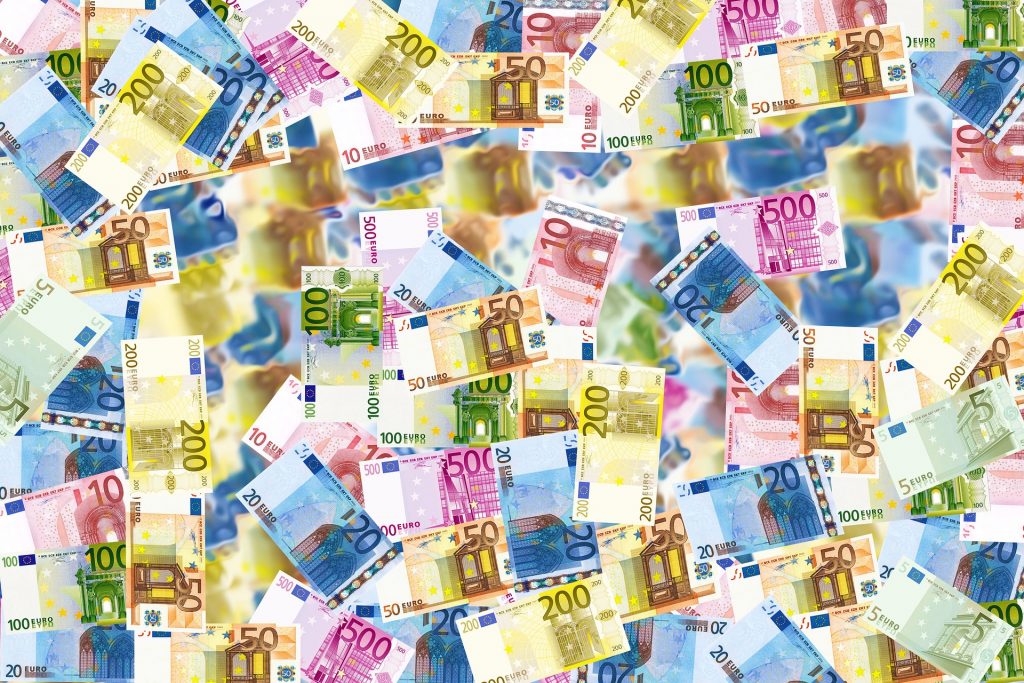
With the Euro (€) as Italy’s official currency, any withdrawal using a UK bank card might incur in the payment of several different fees. Besides the percentual fee referring to the currency conversion, some UK banks may also charge a flat commission for withdrawals made outside the UK. In some instances, you may well end up paying 5%-6% of your original withdrawal in banking fees.
On the other hand, exchanging money before your trip is not a viable solution either. Besides not being any cheaper, it’s also not safe or wise to carry so much money on you during your trip. As such, we recommend using the services of online banking fintech companies such as Revolut, N26 or Monzo.
Although each have their own limitations and fees, they allow you to withdraw a certain amount in foreign currency without any fees involved. And even after that threshold is reached, costs are much smaller when compared to traditional banks. Sign up for Revolut for free >> to get 3 months of Premium.
Venice 3-day travel guide – Common scams and frauds

Overall, Italy is an extremely safe travel destination – and Florence is certainly no exception!
Be that as it may, as with any big (or small) city, it’s important to always use common sense and keep your wits about you. That means no accepting help from strangers when you’re using an ATM or trying to buy public transportation tickets and always keeping an eye out for your stuff when you’re walking through busy areas. To sum up: don’t do anything you wouldn’t feel comfortable doing anywhere else! Plus, we recommend being especially cautious when ordering in restaurants located in touristy areas. Always make sure to check the price on the menu before ordering, otherwise, you might get an unpleasant surprise when the bill arrives! In this regard, be especially careful about the fees restaurants usually charge for eating outside, as these can be outrageously high! The same goes for restaurants with live bands and performers, as it’s not uncommon to find reports of a suspicious “music fee” being added to the bill.
Regardless, your main risk when visiting Venice will be scammers and tots – the same as any city with this much tourism. The advice is always the same: the more you engage, the greater the chance that things won’t go too well for you! Simply ignore any suspicious approaches and don’t engage with activities that are illegal or too good to be true. This doesn’t mean you can’t interact with anyone or need to be constantly on high alert—just take basic precautions to avoid becoming a target. Regarding specific scams in Venice, we have to go with the infamous gondoliers. Did you know rates for gondola rides are actually set by the local government?! In 2024, the official rate for daytime rides (from 09h00 to 19h00) is €90,00 for 30 minutes, going up to €135,00 in the evening. So, if a dishonest gondolier asks for more money, at least now you know what the official price should be. Just don’t be too gullible and you’ll be fine!
Where to sleep in Venice – Hotels and Accommodation

If you’re looking out for a place to stay on our Venice 3-day travel guide then we got you covered!
To the surprise of exactly 0 people, Venice is the kind of place where accommodation will take up a big chunk of your travel budget. Although prices were never low to begin with, the last few years have seen room rates skyrocket to downright absurd numbers, the result of inflation and the implementation of new measures to curb the effects of overtourism in the city. Unfortunately, the recipe seems to be the same everywhere else: raising prices and tax visitors in the pursuit of attracting tourists willing to spend as much as possible. The same goes for restaurants, transportation and activities, making it incredibly hard to spend a few days in Venice on a budget.
That being said, here are a few hotel options which have passed our value-for-money test:
- € – Hotel Cannaregio 2357
- €€ – Arcadia Boutique Hotel
- €€€ – AC Hotel Venezia by Marriott
- €€€€ – Radisson Collection Hotel, Palazzo Nani Venice
IMPORTANT: Although this doesn’t really affect our travel guide, a new €5,00 tourist fee was introduced in 2024 for visitors heading to Venice on a day trip (i.e., without staying overnight). Authorities have already confirmed that the fee will continue into 2025, with an expected increase. That said, and while details are yet to be disclosed, the tax could rise to €10,00 and will be enforced on weekends and holidays during peak tourist season. Officially, visitors who stay overnight in the city are EXEMPT from this fee, as the tourist tax is already included in the cost of accommodation. However, registering on this platform is required so that the fee is waived.
Venice 3-Day Travel Guide – Transportation between the airport and the city centre

If you’re flying directly into Venice, the best way to travel between the Marco Polo Airport and the city centre is by using line 5 from the local bus network. This route links the airport to the Centro Storico (Piazzale Roma), operating daily between 04h00 and 01h00 and with a new tram coming in every 15 to 30 minutes, depending on the time of day. The entire route takes about 20 minutes. You can get your ticket from the automatic machines or selling booths inside the terminal for €10,00. As an alternative, you may also use line 35 from private company ATVO Venezia Express. Both buses leave from the same platform (in front of the terminal), head to the same exact destination and cost the same rate. The only difference is you can actually buy your ticket for the ATVO bus online.
On the other hand, as one would expect from Venice, you may also reach the city center aboard a boat/ferry from Alilaguna. You can buy your ticket directly from the airport’s quay (there’s direct access from the terminal) or inside the boat. Currently, the rate is €15,00 one-way. The ferry service operates between 05h20 and 00h20, with waiting times slightly longer than the bus’s. Moreover, the trip also takes more time, as you’ll need about 1 hour to get to the stops in San Marco, Lido or Rialto.
Florence 3-Day Travel Guide – Public transportation

Considering how important and popular Venice really is, it’s quite surprising that the city is served by a pretty basic public transportation network, especially when compared to some of its famous Italian and European counterparts (the terrain certainly doesn’t help). However, this won’t really affect your experience as a tourist, since the Centro Storico is quite compact and perfect to explore on foot. In fact, and aside from the transportation to/from the airport and the visit to the neighboring islands of Murano and Burano, chances are you won’t even need to use public transportation when in Venice.
Be that as it may, the Vaporetto (the local name given to water buses) is definitely the most useful public transport for tourist visiting Venice, so it’s definitely worth getting a quick overview of how to navigate it.
Vaporetto – The Venetian Water Bus

Although, as mentioned earlier, you probably won’t need to use public transport during your trip to Venice, most visitors like to experience a ride on the Vaporetto, the collective boats that follow designated routes along the canals… just like a regular bus! Especially when compared to a ride on a gondola, which cost at least €90,00 per boat, the Vaporetto offers a more affordable way to explore the canals of Venice at just a fraction of the price. While it may not have the same charm, it’s still a pretty memorable experience!
In total, there are 21 different lines running through the main canals and surrounding areas, even reaching the famous nearby islands of Murano and Burano. Schedules and frequencies vary quite a lot by route, but you can check the details for each line individually right here. Be that as it may, the Vaporetto network is fully integrated in Google Maps, so you just have to enter your starting point and your destination, and it will show you which Vaporetto line to take, where to board and at what time.
Unfortunately, local authorities are perfectly aware of the tourist potential these boats have, so they’ve decided to significantly raise the Vaporetto fares for foreign visitors. While locals pay just €1,50 per trip, tourists are charged the full fare of €9,50 – more than 6x the local price. If you want access to the same rates as locals, you’ll need to purchase a Venezia Unica pass for €50,00. In addition to significant discounts on public transport, this pass also includes access to several of the city’s tourist attractions. You’ll have to do the math to decided whether or not this pass can be a good fit for you.
Lastly, if you plan on using the vaporetto frequently, it’s worth looking into the daily and multi-day options available:
- 24 hours: 20,00€
- 48 hours: 30,00€
- 72 hours: 40,00€
- 7 days: 60,00€
Venice 3-day Travel Guide – Free walking tours

While in Venice, you have the option to explore the city with a free walking tour. These tours, led by local guides or tour companies, offer guided visits to the historic center, sharing intriguing stories about each place and providing valuable cultural context. Even though these tours are technically free, it’s customary to show appreciation for the guide’s efforts by leaving a tip at the end. In Venice, a reasonable minimum tip would be around €10,00.
That being said, here are a few companies that run free walking tours in Venice:
Venice 3-day Travel Guide – Hidden Treasures

Despite its unmitigated fame, with 3 full days in Venice you’ll have enough time to cover the city’s main highlights and still go on a day trip to the criminally underrated city of Verona. That being said, if you’re keen on making some quick detours, it’s perfectly possible to at least check out a handful of places that might otherwise fly under the radar.
That being said, and because we believe a good traveler must always be able to explore beyond the obvious, we wanted to add a few more obscure places to your list of things to see and do in Venice in 3 days:
Rialto Market: Located right in the heart of Venice, it can be challenging to find the city’s authentic side when exploring its major tourist area. Thankfully, the main market is a fantastic spot to mingle with the locals and enjoy some delicious food.
Scala Contarini del Bovolo: One of Venice’s most uncommon buildings, this 15th-century palace is instantly recognizable thanks to the adjacent tower and its spiral staircase, allowing visitors to explore the all the different floors. Still, the true highlight is the stunning panoramic view from the top, one of the finest in the city.
Chiodo Bridge: Out of the 400+ bridges in Venice, Chiodo Bridge stands out as the only one without railings or side barriers. Legend has it that this was once the norm for all bridges in the city, where rival neighborhoods would settle their disputes by fighting atop the bridges and throwing opponents into the canals. Although such practices have since vanished, this bridge remained as it was.
Torcello: While most visitors flock to the nearby islands of Murano and Burano, very few take the trip to the equally charming island of Torcello. Though not much remains of its past glory, Torcello is actually the place where our legendary city of Venice was first founded, about 1500 years ago.
Lido: Another one of Venice’s outlying islands, Lido was one of Europe’s very first beach resorts, boasting many kilometers of sandy shores along the Adriatic Sea. To this day, there are still several historic hotels and villas lining the coast, offering travelers a beach experience that stands in stark contrast to Venice’s more traditional attractions.
Venice 3-Day Travel Guide – What to See and Do in 72 Hours
As mentioned above, 3 days is more than enough time to explore one of the world’s most beautiful cities. So, and with a full 72 hours, you can appreciate the monumental magnificence of Piazza San Marco and its namesake Basilica, explore the legacy of the ancient glorious naval republic inside the Doge’s Palace, stroll along the embankments of the Grand Canal, walk across the iconic Rialto Bridge and even check out the neighboring islands of Murano and Burano. Plus, if you keep up the pace and are wiling to compromise on a museum or two, you may even take the final stage of the itinerary to go on a day trip to lovely Verona!
Without further ado, here’s what to see and do in Venice in 3 days:
Venice 3-Day Travel Guide – Day 1: San Marco and the Grand Canal

Ah, Venice! With its countless canals, over 400 bridges and nearly 120 islands, few cities in the world are as iconic or instantly recognizable as “La Serenissima”. Once the capital of one of the most powerful naval republics in the world, this is a city steeped in history, culture and ostentation, where every detail of its architecture seems meticulously crafted to impress and showcase immense wealth and glory. Today, you’ll dedicate your first day to exploring the district of San Marco, the city’s most touristy area, jampacked with all kinds of attractions and activities. That said, we’ll kick things off at Piazza San Marco, regarded as the heart of Venice and its most famous site. In fact, this is where you’ll find some of the city’s most important historical landmarks, starting with the stunning Basilica di San Marco, Venice’s main church. With its rounded domes and sharp, pointy spires, this is a truly unique construction. Inside, it’s impossible not to notice the similarities with Istanbul’s Hagia Sophia, as the walls are covered in golden mosaics and drawings of religious figures. Coincidence? Far from it, as many of its decorations were actually plundered from Constantinople during the Fourth Crusade, giving this Catholic church a distinct Byzantine look. Nonetheless, there’s plenty more to see at the piazza! Beyond the aforementioned basilica, you can also climb the Torre dell’Orologio (€14,00) or the Campanile (€10,00), the towering brick bell tower that dominates the skyline.
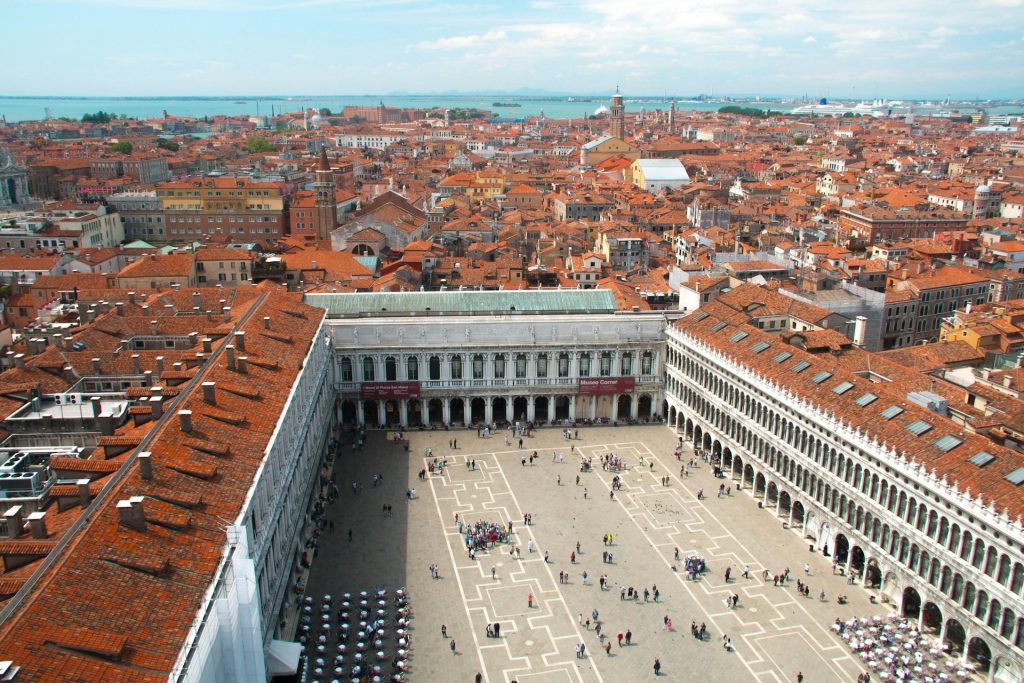
Next to the imposing piazza, make sure to visit the Doge’s Palace (€25,00), the former official residence of the Doge of Venice, the title that was given to the city’s ruler. A real masterpiece inside and out, the palace boasts vibrant frescoes, hidden terraces and private chapels, and is one of the few Venetian attractions that are actually worth the admission price. Curiously, one of the palace’s most famous features isn’t included in the standard tours, so if you want to see the iconic Bridge of Sighs, an historic passage where prisoners once walked from the courtroom to the palace dungeons, you’ll need to head to Ponte della Paglia. After touring the palace, allow yourself to get lost in the narrow streets and winding canals of San Marco, soaking in the atmosphere and ticking off a few lesser-known attractions. Highlights include Teatro La Fenice (€12,00 for a guided tour), one of the most beautiful opera houses in the world, and Scala Contarini del Bovolo (€8,00), a 15th-century palace with an adjacent tower famous for its spiral staircase. Once you make it to the top, enjoy the stunning panoramic view – one of the finest in the city. Back at street level, it is then time to explore the city’s legendary Grand Canal.

Stretching for almost 4 km, this is the canal that pops up on most Venice’s postcards, lined with magnificent façades and bustling with gondolas, vaporetti and traghetti. While Venice’s smaller canals are often picturesque and intimate, like alleyways in an Old Town, the Grand Canal offers the grandeur and monumental setting of a major European city. While you could splurge on a gondola ride, if you’d like to save some money you may simply hop on a traghetto, regular rowing boats that transport passengers between both sides of the canal for just €2,00! You can check the locations for the traghetti terminals right here. Be that as it may, we still recommend walking along the canal’s embankments to discover its most iconic landmarks, such as the Basilica di Santa Maria della Salute, the Ca’ Rezzonico or the Ca’ d’Oro, two of Venice’s most elegant and important palaces. Halfway along the canal, crossing the Rialto Bridge is an absolute must, since this is widely considered one of the most beautiful bridges on Earth. Finally, and as your day winds down, a visit to the Fondaco dei Tedeschi is a perfect final stop. Once a trading hub for German merchants, the space has been converted into a shopping center. However, the real draw here is its free rooftop terrace, a cool place to stretch your legs, relax and enjoy a beautiful view after a long day of exploring Venice.

First day wrap-up:
- Piazza San Marco
- Basilica di San Marco
- Torre dell’Orologio
- Campanile
- Doge’s Palace
- Bridge of Sighs
- Teatro La Fenice
- Scala Contarini del Bovolo
- Grand Canal (traghetti)
- Basilica di Santa Maria della Salute
- Ca’ Rezzonico
- Ca’ d’Oro
- Rialto Bridge
- Fondaco dei Tedeschi – Rooftop
Where to eat in Venice – Best restaurants in San Marco
- Rosticceria Gislon (Italian traditional)
- Ostaria A La Campana (Italian traditional)
- Ai Do Leoni (cichetti – Venetian tapas)
- Magna Bevi Tasi (cichetti – Venetian tapas)
- Baci & Pasta (pasta and gnocchi)
- We Love Italy Fresh Pasta Venice (pasta)
- Crazy Pizza (pizza takeaway)
- Gelateria Gallonetto (gelato)
Venice 3-Day Travel Guide – Day 2: San Polo and the Islands of Murano and Burano

After a good night’s sleep in Venice, you’ll be ready for your final day in the emblematic City of Canals, as day three of the itinerary will be spent on a day trip. However, this won’t really affect your plans, as today you’ll be exploring the districts of San Polo and Cannaregio, before venturing to some of the city’s outer islands after lunch. As such, time to get going at the Rialto Market. Located right in the heart of Venice, it can be challenging to find the city’s authentic side when exploring its major tourist area. Thankfully, the main market is a fantastic spot to mingle with the locals and enjoy some delicious food. Once you’ve had your breakfast, you’ll stroll through the maze-like streets, pedestrian squares, bridges and canals of San Polo. Though less famous than San Marco, the district still brims with the traditional Venetian architecture that charms millions of visitors each year. Plus, there are also a few noteworthy attractions worth checking, including the Basilica di Santa Maria Gloriosa dei Frari and the Scuola Grande di San Rocco. Though the two churches differ quite a lot in style, both are among the city’s finest landmarks.

Next, you’ll head north to the district of Cannaregio, once Venice’s Jewish quarter. As you might have guessed by its name, this was where the city’s Jewish community lived. Interestingly, the neighborhood was known for its foundries, called “geto” in Venetian. Because Jews were required to live in Cannaregio and were forbidden from leaving after dark, the term “ghetto” was actually born here – a word that would carry a much darker connotation in later centuries. Although few Jews remain in Venice nowadays, the community’s legacy can still be seen, and it’s possible to visit the Museo Ebraico di Venezia (€17,00) as well as several small but historic synagogues. While in the area, don’t miss the Chiodo Bridge, the only bridge in Venice without railings or side barriers. Legend has it that this was once the norm for all bridges in the city, where rival neighborhoods would settle their disputes by fighting atop the bridges and throwing opponents into the canals. Although such practices have since vanished, this bridge remained as it was.

Once you’ve seen the main attractions in Venice’s central districts, you’ll spend the afternoon exploring some of the islands on the outskirts. To do so, go to the nearest Vaporetto stop from the Chiodo Bridge (details in the transport section) and take water bus numbers 13, 4.1 or 4.2 to Murano. Think of this tiny island as a mini-Venice, with its own charming canals and classical buildings, but without the heavy crowds and long queues. However, Murano is mostly known for its Venetian glass, considered one of the most valuable and artistic glassworks in the world. So much so that in the past, Venetian authorities required all glassmakers to set up their workshops on this island, making it easier to prevent artisans from fleeing and revealing the secrets of their craft to other European nations. It worked, as even today Murano remains a reference in glassmaking, meaning a visit to the Venetian Glass Museum (€10,00) a must. Other nice spots on the island include the Basilica di Santa Maria e San Donato, the Church of San Pietro Martire and the quirky Palazzo Da Mula.
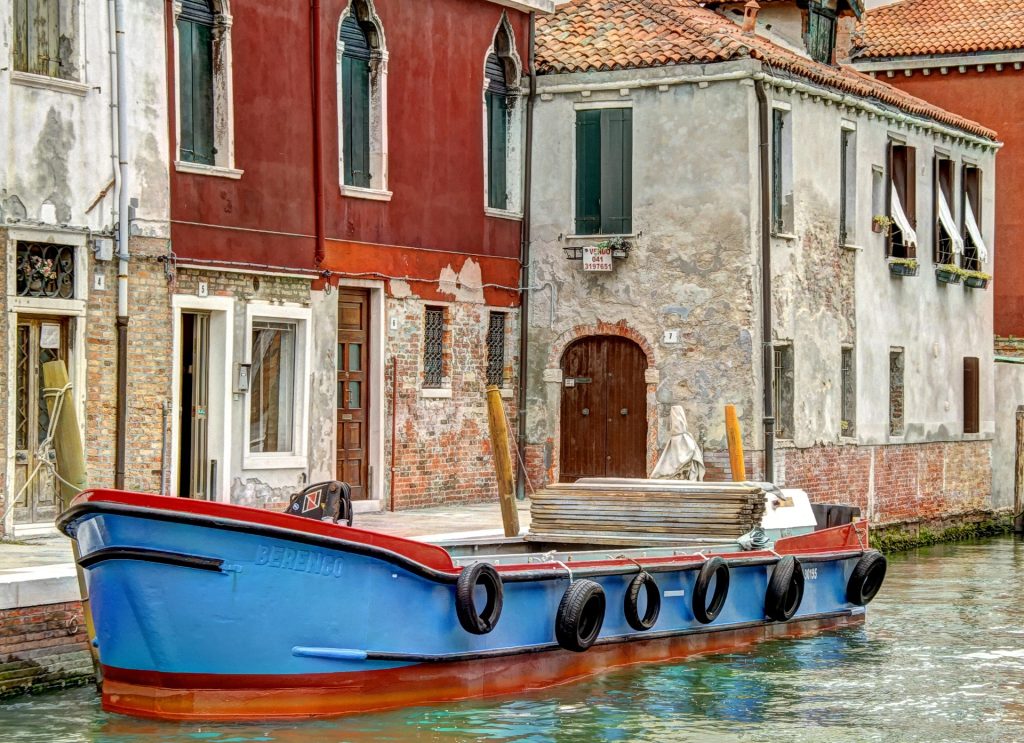
Although time is running short, you’ll still have time to catch another Vaporetto near the Murano Lighthouse (line number 12) and visit one last island before heading back to the city. We’re obviously referring to Burano, one of the most photogenic spots in the Venetian Lagoon. Once a humble fishing village, Burano is now famous for its colorful houses and quaint canals, meaning the best way to enjoy Burano is to wander its streets without a specific plan (just make sure to bring your camera)! Though there aren’t many major landmarks, you can still visit the Church of San Martino and its leaning bell tower, Piazza Galuppi or the vibrant Casa di Bepi Suà. Finally, it’s worth noting that Burano is as famous for its lace as Murano is for its glass, so this centuries-old craft is on display in nearly every souvenir stand, workshop and studio on the island. To learn more about the history and origins of lace in Burano and admire some of the finest examples of this intricate art, visit the Venetian Lace Museum (€5,00).

Second day wrap-up:
- District of San Polo
- Rialto Market
- Basilica di Santa Maria Gloriosa dei Frari
- Scuola Grande di San Rocco
- District of Cannaregio – Jewish Ghetto
- Museo Ebraico di Venezia
- Chiodo Bridge
- Murano
- Venice Glass Museum
- Basilica di Santa Maria e San Donato
- Church of San Pietro Martire
- Palazzo Da Mula
- Murano Lighthouse
- Burano
- Church of San Martino
- Piazza Galuppi
- Casa di Bepi Suà
- Venice Lace Museum
Where to eat in Venice – Best restaurants in San Polo and Cannaregio
- Bacaro Quabrado (Italian traditional)
- Trattoria dalla Marisa (Italian traditional)
- Bacaro Vintido (Italian traditional)
- Vini da Gigio (Italian traditional)
- Osteria Fanal del Codega (Italian traditional)
- Adagio (cichetti – Venetian tapas)
- Osteria dai Zemei (cichetti – Venetian tapas)
- Ravioleria Venezia (ravioli)
- Pizza 2000 (pizza)
- Antico Forno (pizza by the slice)
Venice 3-Day Travel Guide – Day 3: Day trip to Verona

Having explored the best that Venice has to offer, you’ll spend your final day on this itinerary on a quick trip to Verona. Despite its growing popularity in recent years, Verona remains one of Italy’s most underrated destinations, such is the wealth of fabulous sites to explore. Nonetheless, and before diving straight into action, we need to sort out the logistics first. Luckily, both cities are connected by Italy’s rail network, so you just need to access Trenitalia’s website to purchase your tickets online (the journey takes about 1h30 each way, with round-trip tickets starting from €20,00). Alternatively, you can take a bus with Flixbus, which runs multiple daily connections starting at €13,50 (round-trip). Regardless of your option, plan to leave early and pick up the pace, as covering Verona in a day is no small feat. That said, to kick off your perfect introduction to the city, begin by crossing the Scaliger Bridge, which leads directly to Castelvecchio (€9,00), the former official residence of the powerful della Scala family that ruled Verona throughout much of the 13th and 14th centuries. While the castle’s original interiors have largely disappeared, the exterior and walls are remarkably well-preserved. Right next to Castelvecchio, take a moment to admire the Arco dei Gavi, an ancient Roman arch nearly 2000 years old.
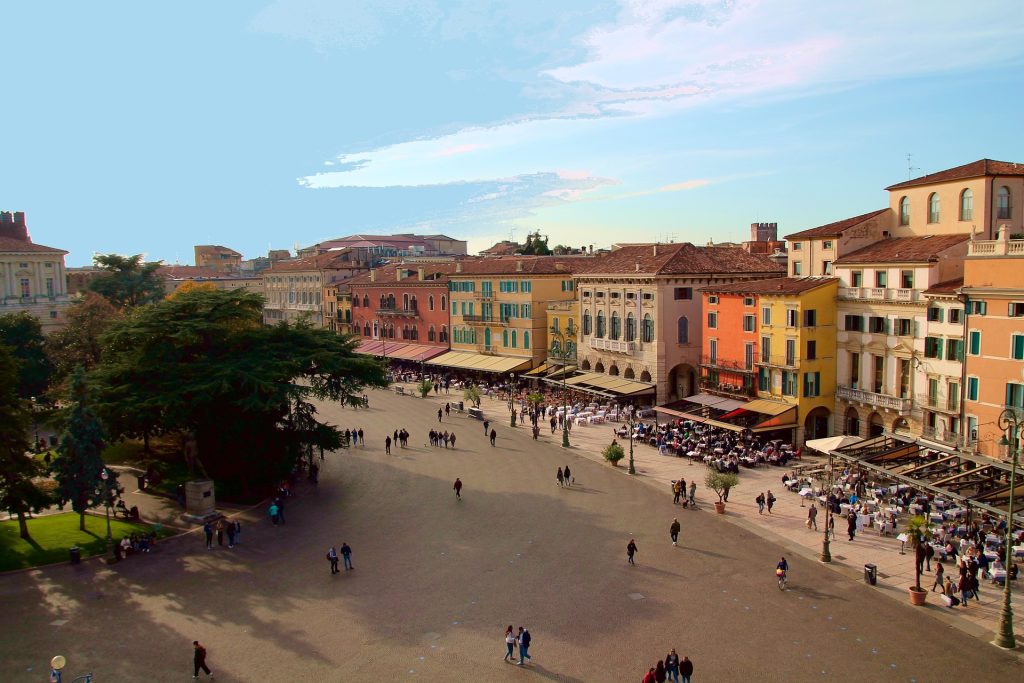
Afterwards, you’ll walk along the iconic Piazza Brá – regarded as the epicenter and main gathering spot of Verona – where you’ll find what is arguably the city’s biggest draw: the Arena di Verona (€12,00). This stunning Roman amphitheater, with a capacity of over 20.000, still hosts numerous concerts and festivals each summer and marks the official entry point into the Città Antica, (Old Town), where you can explore ancient churches, photograph hidden squares and wander through its pedestrian streets. A great example of the latter is Via Giuseppe Mazzini, Verona’s main shopping thoroughfare, which leads directly to Juliet’s House (€12,00, but we don’t really recommend visiting the interiors). Although Shakespeare’s famous play is set in Verona, there’s no evidence that any Romeo or Juliet ever existed there. In fact, the author never visited the city, meaning the whole story is purely fictional. Nonetheless, Verona’s authorities were happy to embrace this promotion, naming this historic building – complete with the iconic balcony – after the play’s female character. You can go there to see what it’s all about, but paying to get inside is a bad idea. On the other hand, nearby Piazza delle Erbe is way more important, standing out as the most popular stop in the Città Antica. Surrounded by beautiful palaces and historical buildings, the square also houses Torre dei Lamberti (€6,00), which you can climb for a lovely view of the city below.
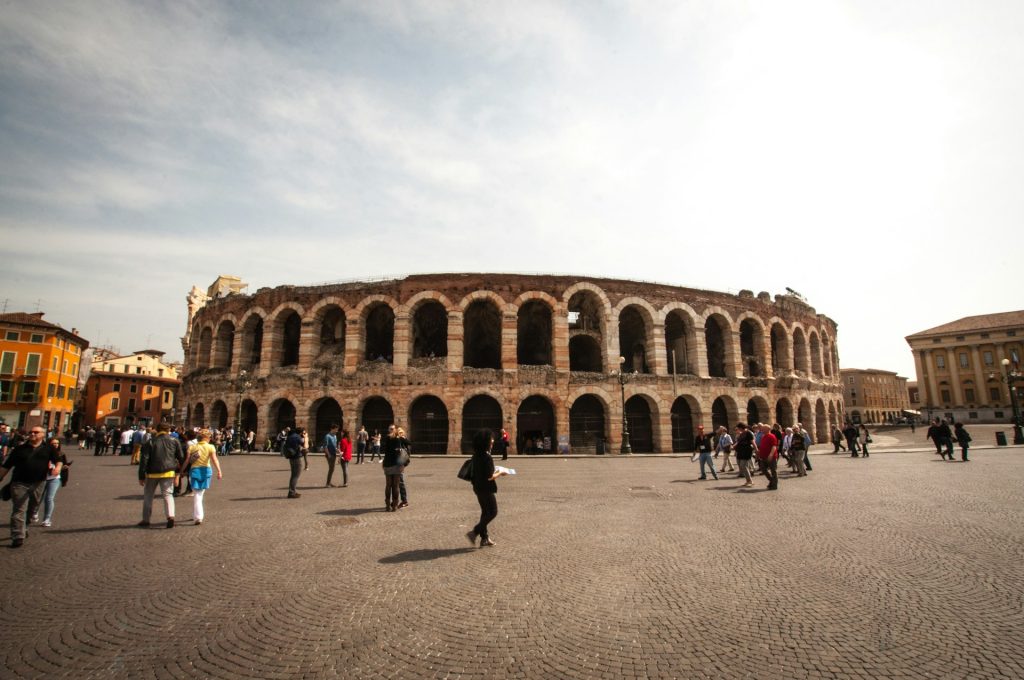
In one of the corners of the square, you’ll spot a series of archways. Passing through them will lead you to Piazza dei Signori, which, while not as important as the predecessor, is just as equally picturesque, featuring another stunning array of palazzos, statues and government buildings. Just ahead, at one of the square’s exits, you’ll find the Church of Santa Maria Antica, whose interiors hide the Arche Scaligere (you can use the same ticket from Castelvecchio), a group of monumental Gothic tombs belonging to the della Scala family. And speaking of churches, your next stops will be two of the city’s most important places of worship, starting with the magnificent Church of Sant’Anastasia, housing some of the most beautiful interiors in Verona, and the Duomo di Santa Maria Matricolare, considered the main cathedral in the city. Finally, before catching the trsin/bus back to Venice, you’ll cap off your day just as you began – by crossing one of Verona’s historic bridges. This time, you’ll walk along the charming Ponte Pietra, a Roman bridge that was destroyed and rebuilt at the end of World War II, that will lead you to the neighboring district of Veronetta. Once you make it to the other side, you can choose to walk or take the funicular (€2,00 one way; €3,00 round trip) up to Piazzale Castel San Pietro, where you can bid farewell to Verona (and this adventure) with the best panoramic view of the city.
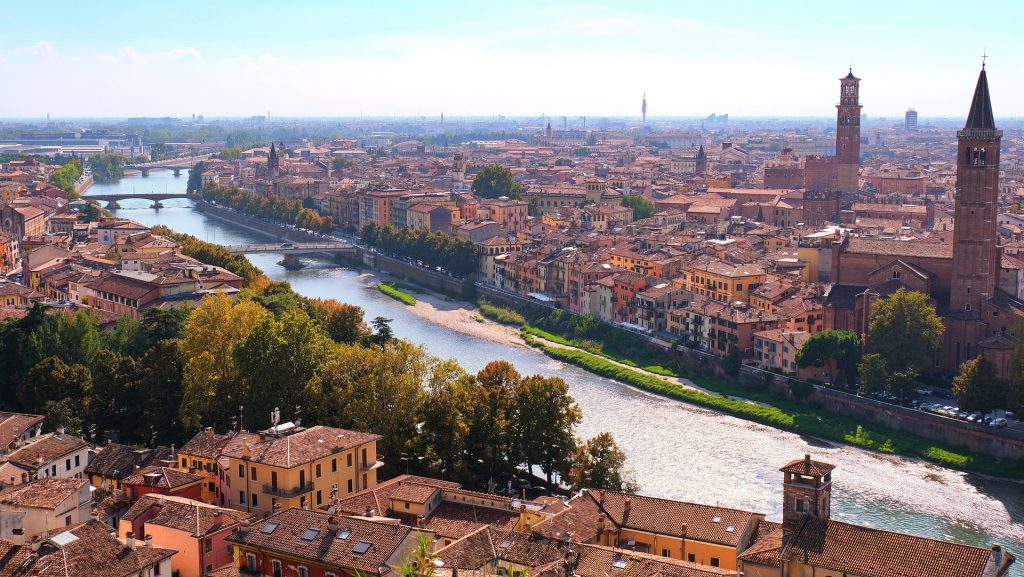
Third day wrap-up:
- Scaliger Bridge
- Castelvecchio
- Arco dei Gavi
- Piazza Brá
- Arena di Verona
- Via Giuseppe Mazzini
- Juliet’s House
- Piazza delle Erbe
- Torre dei Lamberti
- Piazza dei Signori
- Arche Scaligere
- Church of Sant’Anastasia
- Duomo di Santa Maria Matricolare
- Ponte Pietra
- Piazzale Castel San Pietro
Where to eat in Verona – Best restaurants in the city
- Osteria Da Morandin (Italian traditional)
- Osteria Dogana Vecia (Italian traditional)
- Osteria Le Petarine (Italian traditional)
- Osteria Ai Osei (Italian traditional)
- Osteria Perbacco (Italian traditional)
- Bruschetteria Redoro (bruschetti)
- La Figaccia (focaccia)
- Bacchabundus Piadineria Artigianale Via Leoni (piadini)
- Pizzeria da Vincenzo (pizza)
- L’Arte del Gelato (gelato)
Got more than 3 days in Venice? Then you might want to check out other amazing day trips from the city
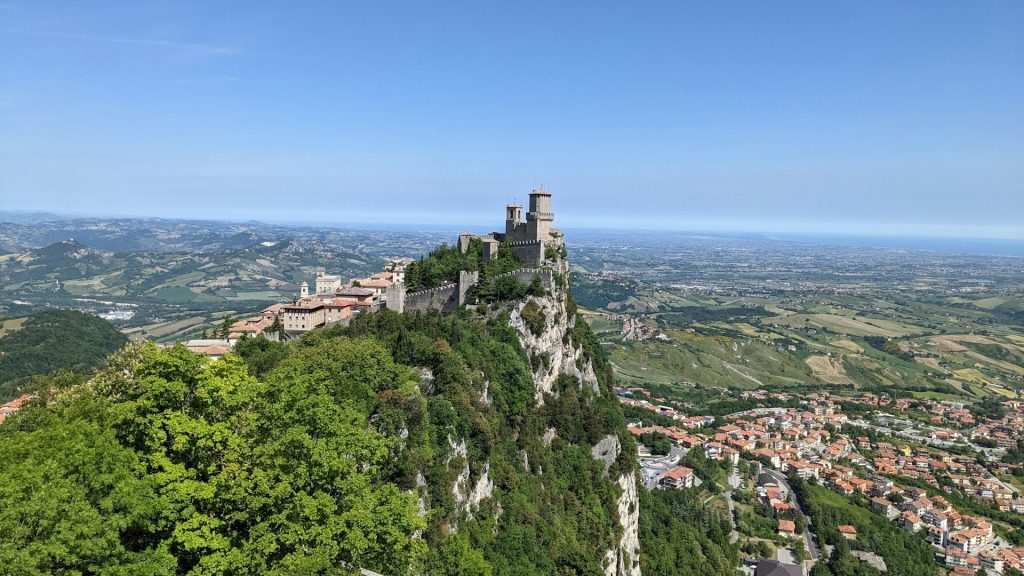
Padua: One of the most famous cities in the region of Veneto, Padua is known for being an important pilgrimage destination, since its main basilica houses the tomb of Saint Anthony. Still, and aside from its religious importance, Padua is also home to one of the oldest universities in Europe – where Galileo once studied – and the world’s oldest botanical garden.
Vicenza: Located nearby in the same region, Vicenza is the place to be if you want to look at some of the most jaw-dropping Renaissance architecture in all of Italy. With masterpieces like the Basilica Palladiana, the Teatro Olimpico and the stunning Corso Palladio, it’s astonishing that Vicenza doesn’t share the same fame as other iconic Italian cities.
San Marino: Are you one of those nutjob travelers who are obsessed about ticking off new countries? Well, then San Marino offers quite a unique opportunity, since this is one of the two independent enclaves entirely surrounded by Italy. It’s a long day but still perfectly doable, since San Marino is the 5th smallest country in the world! When visiting, make sure to ride the cable car to the Old Town, visit the Three Towers (Guaita, Cesta and Torre del Montale) and check out the Basilica before heading back to base.
Treviso: Since some travelers fly into Treviso anyway, might as well set aside a few hours to see what it’s all about. Actually, Treviso is a great addition to a Venetian adventure, since this pretty walled town is often overshadowed by its world-famous neighbor. A big mistake if you ask me – the city shares similar architecture and the same quaint canals, at a fraction of the cost (and with infinitely less crowds).
Bologna: Standing just 150 km apart from Venice, there is no way we wouldn’t include beautiful Bologna. Known as “La Rossa”, for the red and orange hues of virtually every single building in the Centro Storico, Bologna is home to the world’s oldest university and offers plenty to see and do to help you make the most of a day trip.
Traveling soon? Get your Holafly eSIM for seamless internet access in any destination. No more worrying about roaming charges or finding local SIM cards. Enjoy unlimited data and stay connected with ease. Order your Holafly eSIM now »
Heymondo offers a wide range of travel assistance insurance policies. They combine the best quality, service and price with various levels of coverage, so you’re covered on your weekend getaways and long trips. Buy insurance »





